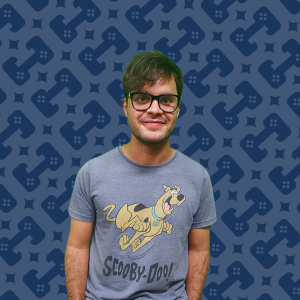“When composing sound effects, your only limit is your imagination. It is an exercise in looking around and using your creativity to generate noises and noises with whatever is in front of you. Look for references, keep in mind the sound you want to simulate and edit, overlay and have fun with your audios, because an unexpected outcome may result in exactly what you need.”
The process starts simple: from need. By assimilating expectations at the game design level, the artistic process begins to take shape and define what kind of experience the game will set out to reproduce. Although sometimes neglected, the sound experience has the potential to be an expressive part in the construction of interactive media, and if we think in relation to what is most shown during gameplay, we will see that sound effects and ambiance will be very present.
In this way, when transitioning to production, as in visual artistic media, the search for references is essential for the alignment of expectations. Since sound is present in many audiovisual media, references from areas such as cinema can easily be used as a means of inspiration.
In practice, anything around you can make exactly the noise you are looking for. It is a matter of imagination and experimentation. The exact sound won’t always be achieved at first, but perhaps something like kneading a packet of rice will have the same effect as a character’s footsteps in the sand, or even an explosion.
Free and affordable tools like Audacity allow anyone interested to begin experimentation in sound design processes. The noise reduction effect allows the audio to be cleaned and even a simple cell phone microphone to be minimally capable of producing usable sound effects. After that, changes in pitch and velocity can characterize the sound and make it more distinguishable than it would be in its raw state. The use of equalizers, although a bit more difficult, will give the sound the ability to become more peculiar, if altered appropriately between bass and treble.
Just like visual art, it is possible to build a sound effect from layers. In this way, by mixing different effects according to the peaks of each wave, it is possible to discover interactions between the parts that can lead to something unique. Also, filling in the different wave frequencies will give the sound a fuller character, different from what it would be with just one flat line of sound. The use of White Noise, which is essentially a single sound that when played fills in the different frequency scales, helps mask certain inadequacies in the audio that can get in the way of its objectivity.
Therefore, once the basic steps of using effects are mastered, sound production becomes an exercise in creativity. The simple curiosity to test what kind of object would fit the sound one is looking for is enough to guide an experimentation. By capturing the sound and treating them minimally by reducing noise and undesirable points, mixing, cutting, merging, and editing different captures can lead exactly to what you are trying to achieve, or even to something better.



